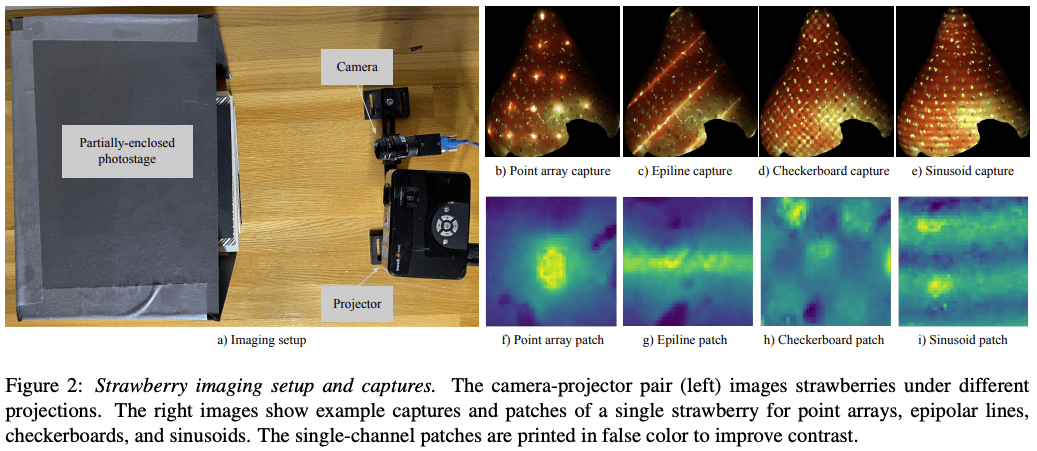Fine-Grain Prediction of Strawberry Freshness
Strawberry Freshness
Predicting fruit freshness before any visible decay is invaluable in the food distribution chain, spanning producers, retailers, and consumers. In this work, we leverage subsurface scattering signatures associated with strawberry tissue to perform long-term edibility predictions.
Low Cost
More Info
We implement a low-cost camera-projector system to capture images of actively illuminated strawberries to predict their freshness.
Rapid
More Info
To simplify this capture, we can drop the angular dimension of light and simply measure the spatially-varying subsurface scattering kernel, which is measured by capturing a sequence of images with a single illuminated spot on the object. Noting that this kernel is often compact, we can speed up the acquisition by illuminating a point array on the object, measuring each kernel, and subsequently scanning the array across the object.
Widely Applicable
More Info
Our idea can be adapted to other non-hard surface fruits such as apples, cherries, tomatoes, and grapes.
Subsurface Scattering
Specifically, we implement various active illumination techniques with a projector-camera system to measure a strawberry’s subsurface scattering and predict the time when it is likely to be inedible. We propose a learning-based approach with captures under structured illumination to perform this prediction. We study the efficacy of our method by capturing a dataset of strawberries decaying naturally over time.


People
Jeremy Klotz
Vijay Rengarajan

Aswin C. Sankaranarayanan
